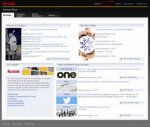I just can't understand this s**t:
Our company is moving toward process free sonora plates and our dealer sent their tech specialists to made some tests.
The first thing they said is – you need to increase pre-damp on your press in order to clean the plate. WTF??? Official kodak white paper very CLEARLY claims that there is no need in pre-damp increasing. In fact it claims that pre-damp increase is wrong and leads to increased dampening contamination.
Second they've told that after setting up ctp profiles they need to linearise plate. LINEARISE, Karl!
Sonora plate linearisation – it's some kind of oxymoron or smth? For what the hell do anyone need this?
So what, kodak tech spec don't RTFM?
Our company is moving toward process free sonora plates and our dealer sent their tech specialists to made some tests.
The first thing they said is – you need to increase pre-damp on your press in order to clean the plate. WTF??? Official kodak white paper very CLEARLY claims that there is no need in pre-damp increasing. In fact it claims that pre-damp increase is wrong and leads to increased dampening contamination.
Second they've told that after setting up ctp profiles they need to linearise plate. LINEARISE, Karl!
Sonora plate linearisation – it's some kind of oxymoron or smth? For what the hell do anyone need this?
So what, kodak tech spec don't RTFM?
















